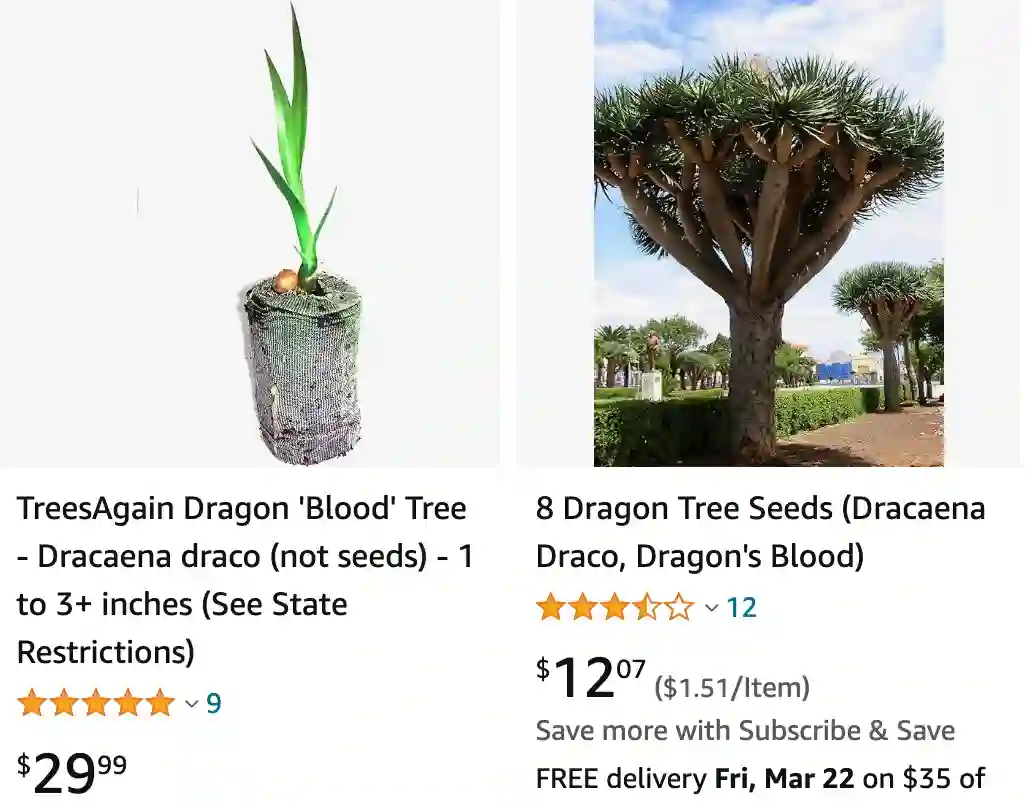
The Enchanting Dragon Tree: A Guide to Dracaena Draco
For years, I’ve been fascinated by the Dragon Tree (Dracaena draco). Its mythical moniker and prehistoric presence ignite the imagination. But beyond the lore, this Canary Island native boasts a unique, sculptural form and resilience that makes it a captivating houseplant.
Having nurtured my own Dracaena draco for a while now, I’ve learned the secrets to keeping this ancient wonder thriving indoors. So, if you’re considering bringing a touch of legend into your home, here’s a comprehensive guide to caring for, growing, and propagating your very own Dragon Tree.
198 Species in Genus Dracaena
Dracaena Draco vs Marginata
I’ve had Dracaena Draco in my collection, and I was always impressed by its impressive, tree-like form and the dramatic, dragon-scale texture of its leaves. On the other hand, my experience with Dracaena Marginata has been quite different; it’s a more slender plant with a bushier appearance, and I appreciate how it adds a touch of elegance to any room. The Draco’s more sculptural presence makes it a standout piece, while the Marginata fits better in smaller spaces due to its compact nature.
How to Describe Dracaena Draco?
The Dracaena draco is an evergreen marvel. Its most striking feature is the single, thick trunk that grows with age, eventually branching out to form a majestic umbrella-like canopy. The sword-shaped leaves, a vibrant green tinged with blue, cluster at the ends of these branches, creating a dramatic silhouette. The bark, smooth and grey in youth, transforms into a rough, almost reptilian texture as the tree matures – a characteristic that inspired its mythical name.
How to Care for Dracaena Draco?
While the Dragon Tree may appear otherworldly, its care requirements are surprisingly down-to-earth. Here’s what you need to know:
- Light: Dracaena draco thrives in bright, indirect sunlight. Avoid harsh afternoon sun, which can scorch the leaves.
- Water: Water thoroughly when the top inch of soil feels dry to the touch. Overwatering is a common enemy, so ensure proper drainage.
- Soil: A well-draining potting mix is crucial. Opt for a cactus or succulent mix to ensure proper aeration and prevent root rot.
- Temperature: The Dragon Tree prefers warm temperatures between 65°F and 80°F (18°C – 27°C). Avoid exposing it to sudden drafts or cold.
- Humidity: Moderate humidity is ideal. If your environment is dry, occasional misting or placing the pot on a pebble tray filled with water can help.
- Fertilizer: A balanced, diluted fertilizer applied once a month during the growing season (spring and summer) is sufficient.
How to Grow Dracaena Draco from Seed?
While propagating from seed is the most rewarding method, it requires patience. Dragon Tree seeds can take months to germinate. Here’s a basic guide:
- Soak the seeds in warm water for 24 hours.
- Sow the seeds in a well-draining seed starting mix and cover lightly with soil.
- Maintain consistent moisture and warmth (around 70°F or 21°C).
- Germination can take anywhere from 3 months to a year. Be patient!
- Once seedlings emerge, provide bright, indirect light and care for them like mature plants.
How to Pronounce Dracaena Draco?
The pronunciation of Dracaena draco might seem intimidating at first glance. Here’s a breakdown:
- Dracaena (Druh-SEE-nuh)
- Draco (DRAY-koh)
Remember, practice makes perfect!
How to Propagate Dracaena Draco?
There are two main methods for propagating your Dragon Tree: stem cuttings and root suckers.
- Stem Cuttings: Take stem cuttings with at least a few nodes. Remove the lower leaves and dip the cut end in rooting hormone. Plant the cutting in a well-draining potting mix and maintain consistent moisture. Rooting can take several weeks.
- Root Suckers: Occasionally, Dragon Trees develop pups or root suckers at the base. These can be carefully separated from the mother plant and potted individually.
How to Prune a Dracaena Draco?
Pruning is optional but can encourage bushier growth and maintain the desired shape. Use sterilized pruning shears to remove leggy stems or unwanted branches. Make clean cuts just above a node.
Is Dracaena Draco Cat Friendly?
The good news is that Dracaena draco is considered non-toxic to cats and dogs by the ASPCA. However, it’s always best to supervise curious pets around any houseplant.
Which is Better, Dracaena Draco or Dracaena Cinnabari?
Both Dracaena draco and Dracaena cinnabari (Cinnabar Dracaena) are popular houseplants. Here’s a quick comparison to help you decide:
- Growth Habit: Dracaena draco has a single, thick trunk that branches with age. Dracaena cinnabari features multiple, thinner canes that grow upright.
- Light: Both prefer bright, indirect light, but Dracaena cinnabari can tolerate lower light conditions slightly better.
- Growth Rate: Dracaena draco is a slow grower, while Dracaena cinnabari grows at a moderate pace.
- Maintenance: Both require minimal care, but Dracaena cinnabari might need slightly more frequent watering due to its denser foliage.
Ultimately, the choice depends on your preference. If you desire a dramatic, sculptural statement piece, Dracaena draco is ideal. If you prefer a bushier plant with faster growth, Dracaena cinnabari might be a better fit.
If i die, water my plants!



